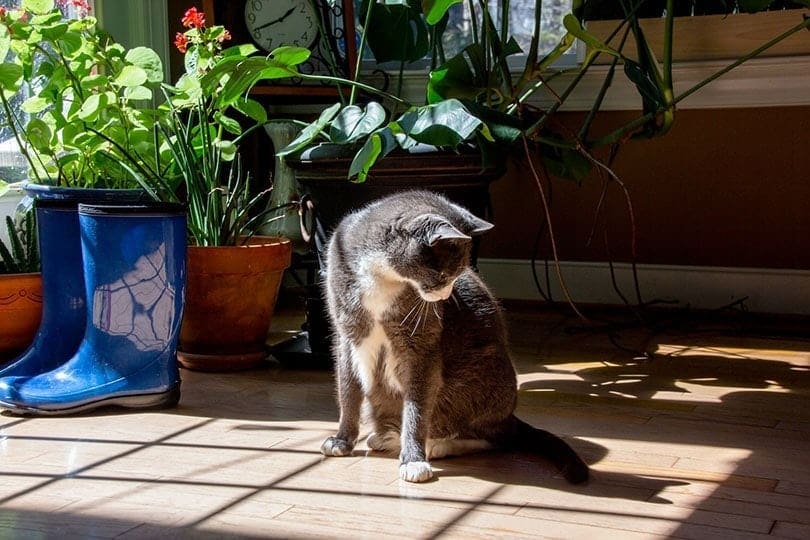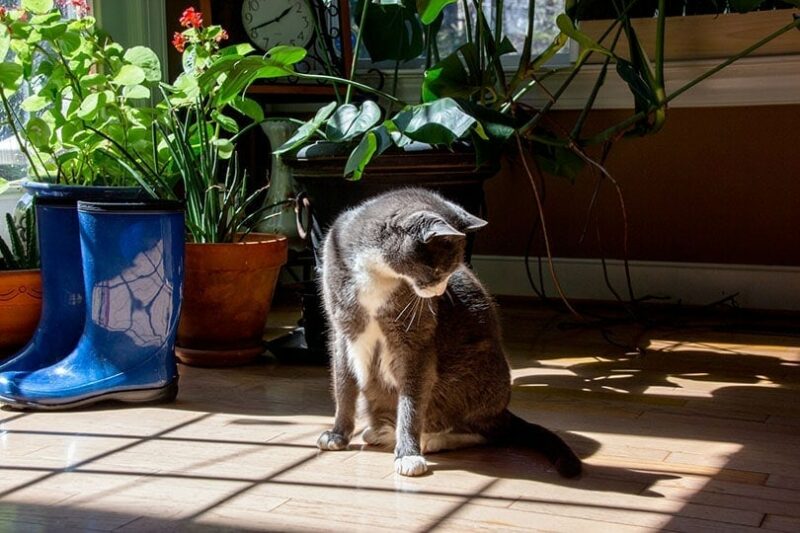As a cat owner, you need to make sure your beloved friend is healthy, and sometimes that means dealing with bodily functions that aren’t so pleasant. Cats have two anal sacs that help them mark their territory. The sacs are located on either side of the anus and emit a smelly, dark substance. Most of the time, the liquid is expelled when they pass feces.
Generally, most healthy cats don’t need these sacs removed or expressed, but they can sometimes lead to health problems. Common issues associated with cat anal glands include infections, clogging, and abscesses.
Keeping your cat healthy requires the right knowledge and awareness. Here are six signs to help you tell if your cat needs glands expressed.

The 6 Signs Your Cat Needs Their Glands Expressed
1. Chasing Their Tail
Some animals find chasing their tail fun and entertaining, and if this is a typical behavior your cat shows, it’s probably not a huge problem. But if your furry friend has never done this before and just picked the habit up, keep looking for other signs of anal gland concerns.
Also, watch for an increase in tail chasing. While this behavior alone might not indicate anal gland compaction is the problem, it’s still a concerning behavior that needs to be monitored.
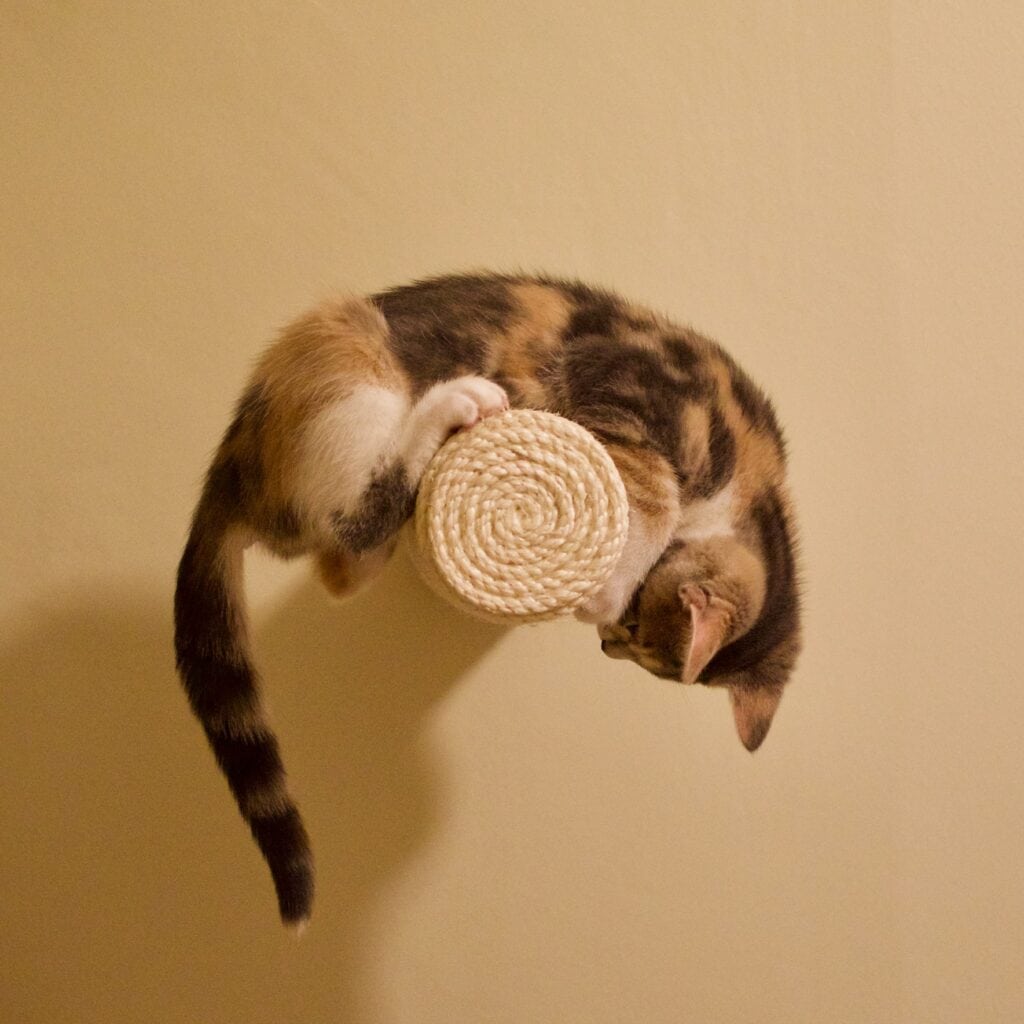
2. Scooting on the Floor
Anal gland issues are more common in dogs than cats, so it’s not surprising that dogs usually “scoot” like this. While dogs are more likely to do this, it’s also a good indicator there’s something wrong with your cat’s anal glands. Your cat is likely trying to relieve uncomfortable or itchy feelings by rubbing their bottom on the ground. Exhibiting this behavior now and again isn’t a huge deal, so take note of the frequency.
3. Licking the Area Frequently
Cats groom often and usually keep themselves relatively clean by licking their fur. So, it’s normal to see your cat cleaning around their private areas. However, take notice if they’re doing so much more than ever before. They may start licking or even biting around the base of the tail, too. Check under the cat’s tail for abscesses, other sores or anal gland discharge if you notice this behavior.
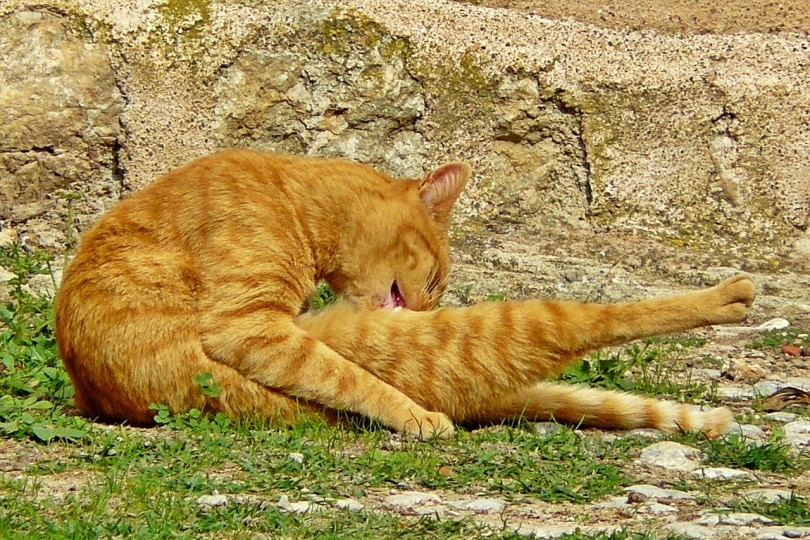
4. Your Cat Seems to Be in Pain
It’s challenging to tell if your cat is in pain because they naturally hide or minimize their feelings. Masking pain is likely a leftover survival mechanism, but it makes your job as a pet owner harder.
You don’t want your feline to suffer, so look for straining when the cat poops or struggles to sit normally. They might try to keep their bottom and tail from touching anything or avoid putting pressure there.
5. Swelling Around the Anal Area
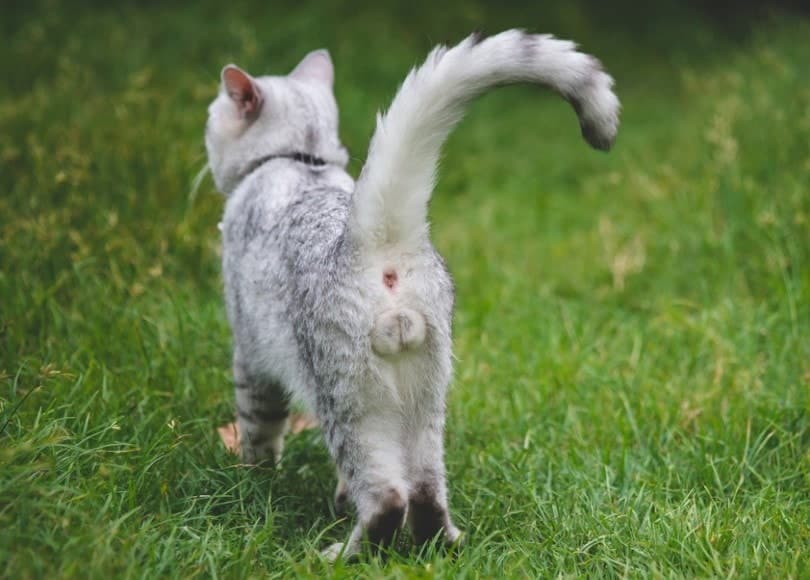
You know your kitty better than anyone, so you’ll be the one to pick up on any strange behaviors or health problems that weren’t there before. If they’ve started licking their butt and tail or showing signs of pain, inspect the outer area for swelling. You can gently touch the sides, and if you feel a rigid mass, there is likely a problem. Even if it’s not anal gland-related, you’ll want to get the cat checked out by a vet. There may also be an open wound if the gland has ruptured.
6. Meowing to Get Your Attention
This is a behavior that not all cats will show, as they all have different personalities. But meowing more than usual could mean your cat has a health issue. Pay attention to their vocalizations and if the sounds seem strained. This behavior alone doesn’t indicate the problem is related to impacted anal glands but could be an indication something out of the ordinary is going on.
Conclusion
Have you noticed any of the signs mentioned above? If so, the best way to know if your cat needs their anal glands expressed is to take them to the veterinary clinic. The vet can thoroughly evaluate your cat and usually express the anal glands at the appointment. The veterinarian can also protect your pet from worsening signs like an infection.
Featured Image Credit: Salomé Guruli, Unsplash

